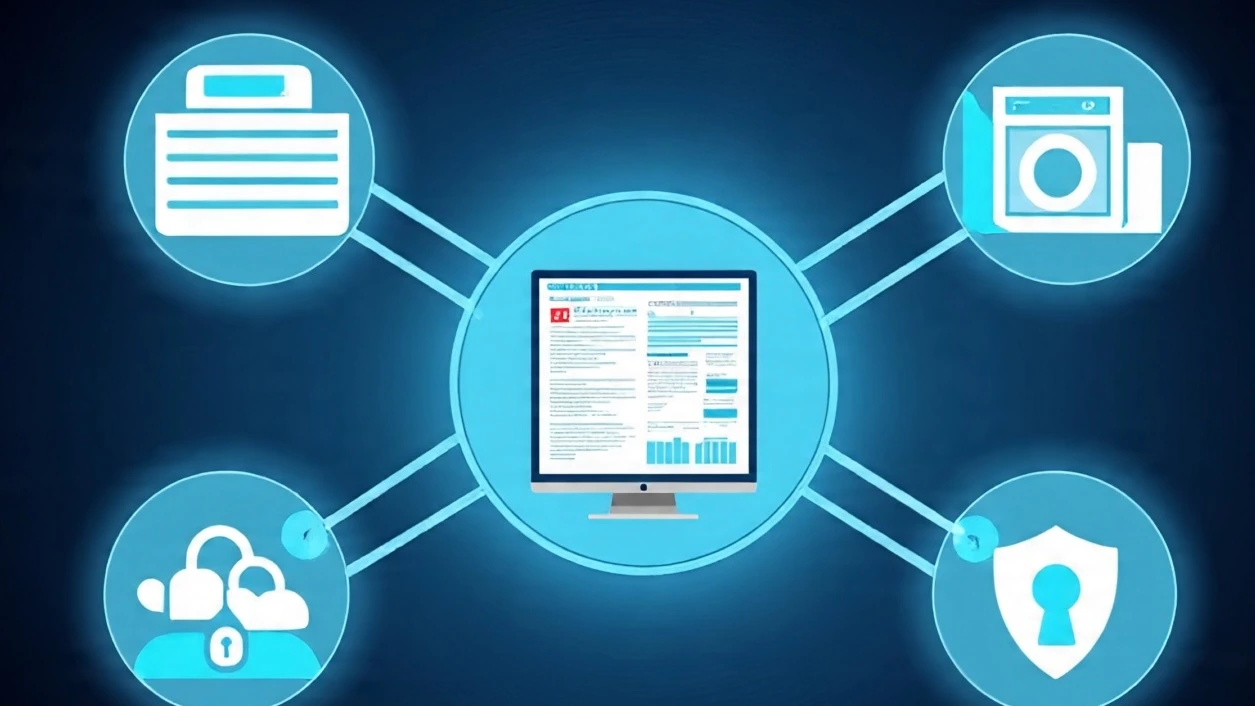
Financial Data Analysis Best Practices: Expert Guide for 2025
Financial Data Analysis Best Practices: Expert Guide for 2025
I've spent the better part of two decades watching financial analysis transform from spreadsheet wrestling matches to sophisticated, AI-powered insights that can literally predict the future. And let me tell you—the analysts who've adapted to these changes are light-years ahead of those still stuck in 2010.
If you're analyzing financial data and still feeling like you're drinking from a fire hose, you're not alone. The good news? I'm going to share the exact methods and tools that separate the pros from the overwhelmed. These aren't theoretical concepts from some textbook—they're battle-tested strategies I've used to turn messy financial data into crystal-clear business insights.
Foundation Principles of Financial Data Analysis
Successful financial analysis begins with understanding core principles that guide effective practice:
Data Integrity and Quality:
- Source Verification: Always validate data sources and establish clear audit trails
- Consistency Checks: Ensure data formats, units, and time periods align across datasets
- Completeness Assessment: Identify and address missing data points that could skew analysis
- Accuracy Validation: Cross-reference key figures with original source documents
Analytical Objectivity:
- Bias Recognition: Acknowledge potential cognitive biases that may influence interpretation
- Multiple Perspectives: Consider various analytical approaches and viewpoints
- Assumption Documentation: Clearly state and justify analytical assumptions
- Peer Review: Implement collaborative validation processes
Data Collection and Preparation Methodologies
Effective financial analysis starts with proper data collection and preparation strategies:
Strategic Data Sourcing:
Internal Data Sources:
- General Ledger Systems: Core accounting data with transaction-level detail
- Enterprise Resource Planning (ERP): Integrated operational and financial information
- Customer Relationship Management (CRM): Revenue and customer profitability data
- Banking and Treasury Systems: Cash flow and liquidity information
External Data Sources:
- Market Data Providers: Industry benchmarks and economic indicators
- Regulatory Filings: Competitor and industry analysis data
- Credit Rating Agencies: Risk assessment and creditworthiness information
- Economic Databases: Macroeconomic trends and forecasting data
Data Cleaning and Standardization:
- Format Standardization: Convert all data to consistent formats and units
- Duplicate Removal: Identify and eliminate redundant records
- Outlier Detection: Flag unusual values for investigation
- Missing Value Treatment: Develop strategies for handling incomplete data
- Validation Rules: Implement automated checks for data quality
Advanced Analytical Techniques
Trend Analysis and Forecasting:
Time Series Analysis:
- Moving Averages: Smooth data to identify underlying trends
- Seasonal Decomposition: Separate cyclical patterns from long-term trends
- Exponential Smoothing: Weight recent observations more heavily
- ARIMA Models: Advanced statistical forecasting for complex patterns
Regression Analysis:
- Linear Regression: Identify relationships between financial variables
- Multiple Regression: Analyze impact of multiple factors simultaneously
- Logistic Regression: Model binary outcomes like default probability
- Polynomial Regression: Capture non-linear relationships
Ratio Analysis Frameworks:
Liquidity Ratios:
- Current Ratio: Current Assets ÷ Current Liabilities
- Quick Ratio: (Current Assets - Inventory) ÷ Current Liabilities
- Cash Ratio: Cash and Cash Equivalents ÷ Current Liabilities
- Operating Cash Flow Ratio: Operating Cash Flow ÷ Current Liabilities
Profitability Ratios:
- Gross Profit Margin: (Revenue - COGS) ÷ Revenue
- Operating Margin: Operating Income ÷ Revenue
- Net Profit Margin: Net Income ÷ Revenue
- Return on Assets (ROA): Net Income ÷ Total Assets
- Return on Equity (ROE): Net Income ÷ Shareholders' Equity
Efficiency Ratios:
- Asset Turnover: Revenue ÷ Average Total Assets
- Inventory Turnover: COGS ÷ Average Inventory
- Receivables Turnover: Credit Sales ÷ Average Accounts Receivable
- Days Sales Outstanding: 365 ÷ Receivables Turnover
Technology Stack for Modern Financial Analysis
Essential Software Tools:
Microsoft Excel (Advanced Features):
- Power Query: Advanced data transformation and connection capabilities
- Power Pivot: In-memory data modeling for large datasets
- Dynamic Arrays: XLOOKUP, FILTER, and UNIQUE functions
- Scenario Manager: What-if analysis and sensitivity testing
Business Intelligence Platforms:
- Tableau: Advanced data visualization and dashboard creation
- Power BI: Microsoft's integrated BI solution with Excel connectivity
- QlikView/QlikSense: Associative data modeling and exploration
- Looker: Modern cloud-based analytics platform
Statistical Analysis Software:
- R: Open-source statistical computing with extensive financial packages
- Python: Pandas, NumPy, and SciPy for data analysis
- SAS: Enterprise statistical analysis and risk management
- SPSS: User-friendly statistical analysis interface
Visualization and Reporting Best Practices
Effective Chart Selection:
Time-Based Data:
- Line Charts: Ideal for showing trends over time
- Area Charts: Emphasize magnitude of change
- Combination Charts: Display multiple metrics with different scales
- Waterfall Charts: Show incremental changes in values
Categorical Comparisons:
- Column/Bar Charts: Compare values across categories
- Stacked Charts: Show composition and totals simultaneously
- Pie Charts: Display proportions (use sparingly)
- Bullet Charts: Compare actual vs. target performance
Dashboard Design Principles:
- Hierarchy of Information: Organize content by importance and relevance
- Consistent Color Schemes: Use colors strategically to convey meaning
- Interactive Elements: Allow users to drill down and filter data
- Mobile Responsiveness: Ensure accessibility across devices
- Performance Optimization: Balance detail with loading speed
Risk Analysis and Management
Risk Identification Methodologies:
Market Risk Analysis:
- Value at Risk (VaR): Quantify potential losses under normal market conditions
- Stress Testing: Analyze performance under extreme scenarios
- Sensitivity Analysis: Assess impact of variable changes
- Beta Calculation: Measure systematic risk relative to market
Credit Risk Assessment:
- Probability of Default Models: Statistical prediction of payment failure
- Loss Given Default: Expected loss percentage upon default
- Credit Scoring Models: Automated risk assessment systems
- Portfolio Risk Analysis: Diversification and concentration effects
Operational Risk Evaluation:
- Process Risk Mapping: Identify vulnerabilities in business processes
- Control Effectiveness Testing: Validate risk mitigation measures
- Key Risk Indicators (KRIs): Early warning metrics
- Scenario Analysis: Model impact of operational failures
Regulatory Compliance and Reporting
Financial Reporting Standards:
GAAP/IFRS Compliance:
- Revenue Recognition: Proper timing and measurement of income
- Asset Valuation: Fair value vs. historical cost considerations
- Liability Recognition: Complete and accurate obligation reporting
- Disclosure Requirements: Comprehensive note presentation
Regulatory Reporting:
- SEC Filings: 10-K, 10-Q, and 8-K preparation and analysis
- Banking Regulations: Basel III compliance and capital adequacy
- Tax Reporting: Transfer pricing and international tax compliance
- Environmental Reporting: ESG metrics and sustainability disclosures
Automation and Process Improvement
Workflow Automation Strategies:
Data Integration Automation:
- ETL Processes: Extract, Transform, Load automated pipelines
- API Connections: Real-time data feeds from multiple sources
- Scheduled Updates: Automatic refresh of reports and dashboards
- Data Validation: Automated quality checks and error flagging
Report Generation Automation:
- Template-Based Reporting: Standardized formats with dynamic data
- Distribution Automation: Automated email and publication workflows
- Exception Reporting: Automated alerts for unusual patterns
- Version Control: Automated backup and change tracking
Process Standardization:
- Documentation Standards: Consistent methodology and assumption recording
- Quality Control Checklists: Systematic review and validation processes
- Role-Based Access: Appropriate security and approval workflows
- Performance Metrics: KPIs for analytical process effectiveness
Advanced Analytics and Machine Learning
Predictive Analytics Applications:
Customer Analytics:
- Customer Lifetime Value: Predict long-term customer profitability
- Churn Prediction: Identify customers at risk of leaving
- Cross-Selling Models: Optimize product recommendation strategies
- Price Elasticity: Model demand response to pricing changes
Financial Forecasting:
- Cash Flow Prediction: Advanced models for liquidity planning
- Revenue Forecasting: Multi-variable predictive models
- Cost Modeling: Activity-based and driver-based predictions
- Budget Variance Analysis: Automated exception identification
Machine Learning Techniques:
- Decision Trees: Rule-based classification for risk assessment
- Random Forest: Ensemble methods for improved prediction accuracy
- Neural Networks: Deep learning for complex pattern recognition
- Clustering Analysis: Customer segmentation and market analysis
Quality Assurance and Control
Analytical Quality Framework:
Documentation Standards:
- Methodology Documentation: Clear explanation of analytical approaches
- Assumption Logs: Record and justify all analytical assumptions
- Data Lineage: Track data sources and transformations
- Change Management: Document modifications and reasons
Review Processes:
- Peer Review: Independent validation by qualified colleagues
- Management Review: Senior oversight of key analyses
- Technical Review: Validation of calculations and methodologies
- Business Review: Assessment of practical relevance and applicability
Error Detection and Correction:
- Reasonableness Tests: Compare results to expected ranges
- Reconciliation Procedures: Verify totals and balances
- Trend Analysis: Identify unusual patterns requiring investigation
- Cross-Validation: Compare results using alternative methods
Communication and Stakeholder Engagement
Audience-Specific Communication:
Executive Reporting:
- Executive Summaries: Concise highlights with key insights
- Strategic Implications: Connect analysis to business strategy
- Action-Oriented Recommendations: Clear next steps and priorities
- Risk and Opportunity Assessment: Balanced perspective on implications
Technical Audiences:
- Detailed Methodologies: Comprehensive explanation of techniques
- Statistical Significance: Confidence intervals and hypothesis testing
- Sensitivity Analysis: Robustness testing and scenario modeling
- Reproducibility: Sufficient detail for replication
Presentation Best Practices:
- Storytelling with Data: Create compelling narratives around insights
- Visual Hierarchy: Guide audience attention to key points
- Interactive Elements: Allow exploration of underlying data
- Context and Benchmarking: Provide relevant comparison points
Emerging Trends and Future Considerations
Technology Evolution:
- Artificial Intelligence Integration: AI-powered insights and automation
- Real-Time Analytics: Continuous monitoring and immediate insights
- Cloud-Based Solutions: Scalable computing and collaborative platforms
- Mobile Analytics: On-the-go access to financial insights
Regulatory Changes:
- ESG Reporting: Environmental, social, and governance metrics
- Data Privacy: GDPR, CCPA, and other data protection requirements
- Algorithmic Accountability: Transparency in automated decision-making
- International Standards: Harmonization of global reporting requirements
Implementation Roadmap
Getting Started (Months 1-3):
- Current State Assessment: Evaluate existing capabilities and gaps
- Tool Selection: Choose appropriate software and platforms
- Data Inventory: Catalog available data sources and quality
- Initial Training: Build foundational skills in chosen tools
Building Capabilities (Months 4-9):
- Process Development: Create standardized analytical workflows
- Template Creation: Develop reusable analysis frameworks
- Quality Standards: Implement review and validation procedures
- Advanced Training: Develop specialized analytical skills
Optimization (Months 10-12):
- Automation Implementation: Deploy workflow automation tools
- Performance Measurement: Establish KPIs for analytical effectiveness
- Continuous Improvement: Regular review and enhancement processes
- Advanced Capabilities: Explore machine learning and AI integration
Conclusion
Mastering financial data analysis requires a combination of technical skills, analytical thinking, and business acumen. The best practices outlined in this guide provide a comprehensive framework for developing world-class analytical capabilities that can drive significant business value.
The key to success lies in building a solid foundation of data quality and analytical rigor, then gradually expanding capabilities with advanced tools and techniques. Remember that technology is an enabler, but the real value comes from asking the right questions and interpreting results in the context of business strategy and market conditions.
As the field continues to evolve with new technologies and regulatory requirements, maintaining a commitment to continuous learning and adaptation will ensure your analytical capabilities remain relevant and valuable. Focus on building sustainable processes and developing both technical and communication skills to maximize your impact as a financial analyst.
Ready to elevate your financial analysis capabilities? Start by assessing your current practices against these best practices, identify priority improvement areas, and develop a structured implementation plan. The investment in better analytical capabilities will pay dividends through improved decision-making and business performance.


